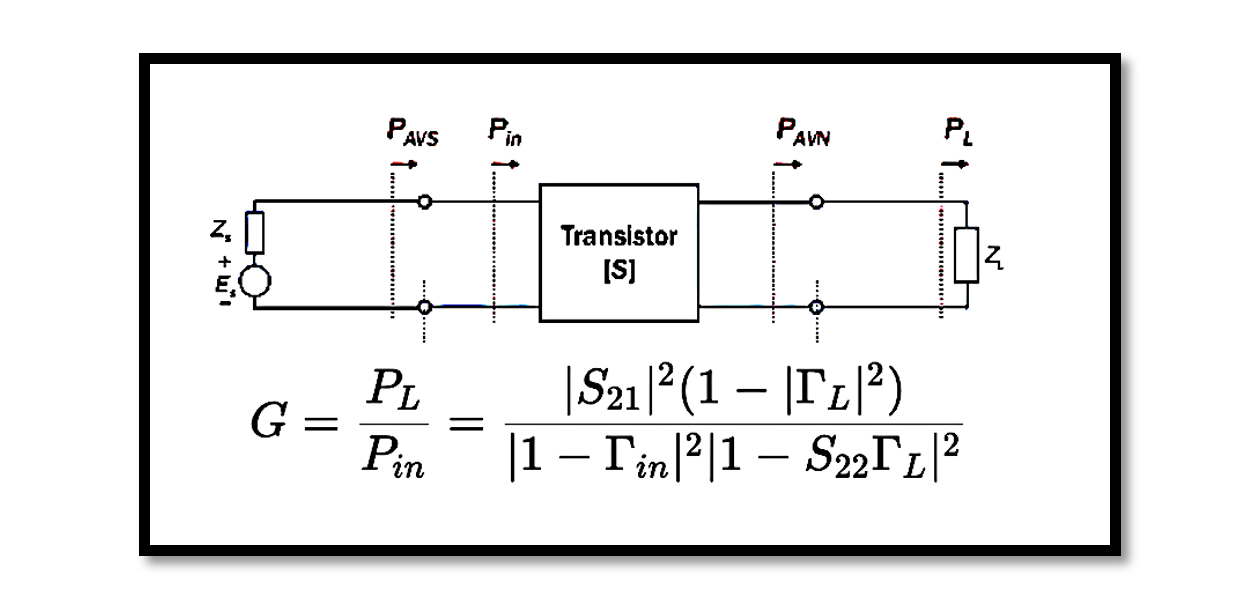
Understanding Power Gain Formula and Definition
In electronic systems, power gain is a crucial parameter that quantifies the amplification capability of a device or a network. It measures the increase in power between the input and output of a system. Power gain is particularly significant in applications such as amplifiers, where boosting the strength of a signal is essential for reliable communication or signal processing.
Power gain (G) is defined as the ratio of output power (Pout) to input power (Pin) of a system:

Importance of Power Gain:
- Signal Amplification: Power gain plays a central role in amplifying weak signals to levels suitable for further processing or transmission. In communication systems, for instance, amplifiers are employed to boost the strength of signals before they are transmitted over long distances or received by sensitive receivers.
- Noise Performance: Amplification often introduces additional noise to the signal. Power gain is essential for achieving the desired signal-to-noise ratio (SNR) by amplifying the signal more than the noise. Low-noise amplifiers (LNAs) are designed to provide high power gain while minimizing added noise.
- Signal Integrity: Power gain helps maintain the integrity of signals as they traverse through various components and transmission lines in a system. By compensating for losses, impedance mismatches, and other distortions, power gain ensures that the signal remains recognizable and interpretable at the output.
- Efficiency and Performance: Efficient power gain ensures that signals are amplified with minimal distortion and power consumption. High-performance amplifiers exhibit high power gain, low distortion, wide bandwidth, and good linearity, contributing to overall system efficiency and fidelity.
Calculating Power Gain: The power gain of a system can be calculated using the following formula:

Where:
- Pout is the output power, measured at the load or output terminal of the system.
- Pin is the input power, measured at the source or input terminal of the system.
Factors Influencing Power Gain:
- Device Characteristics: The power gain of an amplifier depends on its inherent characteristics, such as gain, bandwidth, noise figure, and linearity. These characteristics are determined by the design and technology used in the amplifier.
- Load Impedance Matching: Power transfer efficiency is maximized when the load impedance matches the output impedance of the amplifier. Impedance mismatches can lead to reflections and reduced power transfer, affecting the overall power gain.
- Frequency Response: Power gain may vary with frequency due to the frequency-dependent behavior of components and circuit elements. The frequency response of the amplifier dictates its performance across different frequency bands.
- Operating Conditions: Temperature, supply voltage, and biasing conditions can influence the performance and stability of amplifiers, thereby affecting their power gain.
Power Gain Formula: Let’s break down the derivation step by step:
We start with voltage relations at the input (V1-) and output (V2-) of a two-port network. For an input incident voltage V1+ and reflected voltage V2+, we have:

Here, ΓL represents the load reflection coefficient.
Voltage Reflection Coefficient: We relate the incident and reflected waves at the input, and define the input reflection coefficient Γin as the ratio of reflected input voltage to incident input voltage:

Here, Z0 is the characteristic impedance of the transmission line, and Zin is the input impedance. The input voltage V1 is expressed in terms of the source voltage Vs and the input impedance Zin:

This equation represents the superposition of the incident and reflected waves at the input.
Input Power: The input power Pin can be calculated using the expression for power in terms of voltage and impedance:

This expression represents the power delivered to the input of the network.
Output Power: The output power PL can be calculated similarly, considering the load reflection coefficient ΓL.
Power Gain: The power gain G is defined as the ratio of output power to input power:

This equation gives the power gain of the network in terms of its scattering parameters and load reflection coefficient. These steps outline the derivation of the power gain formula for a two-port network, starting from the voltage relations and progressing through the reflection coefficients and power expressions.
Conclusion: Power gain is a fundamental parameter that underpins the design and operation of amplifiers and signal processing systems. By amplifying signals while maintaining integrity and efficiency, power gain enables the reliable transmission and processing of information across various electronic devices and communication networks.

Learn more about this topic by taking the complete course ‘Microwave Amplifier and Low Noise Amplifier (LNA) Design Theory and Principles online course – RAHRF526’. Watch the course videos for more detailed understanding. Also checkout other courses on RF system and IC design on https://rahsoft.com/courses/. Rahsoft also provides a certificate on Radio Frequency. All the courses offer step by step approach.



